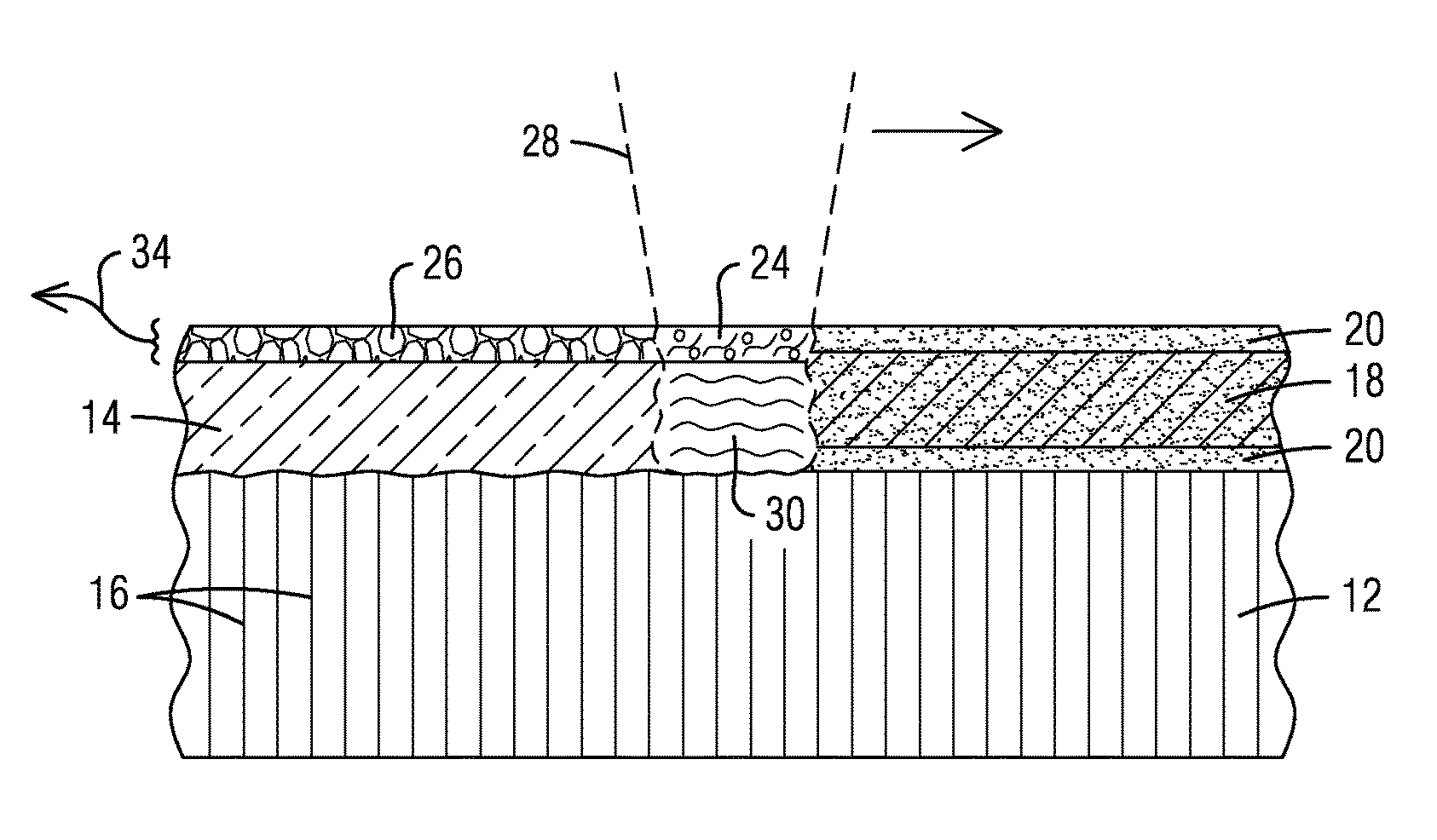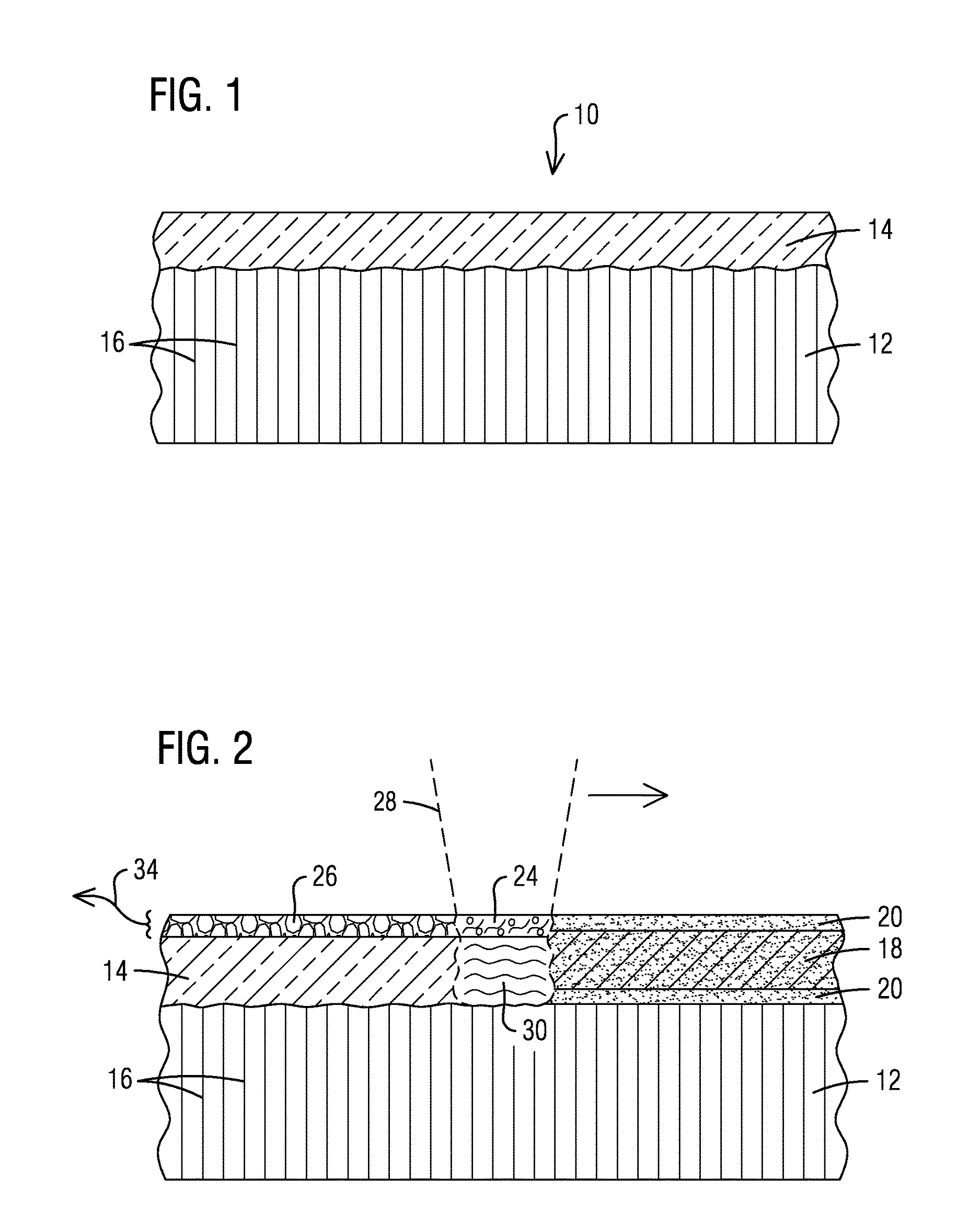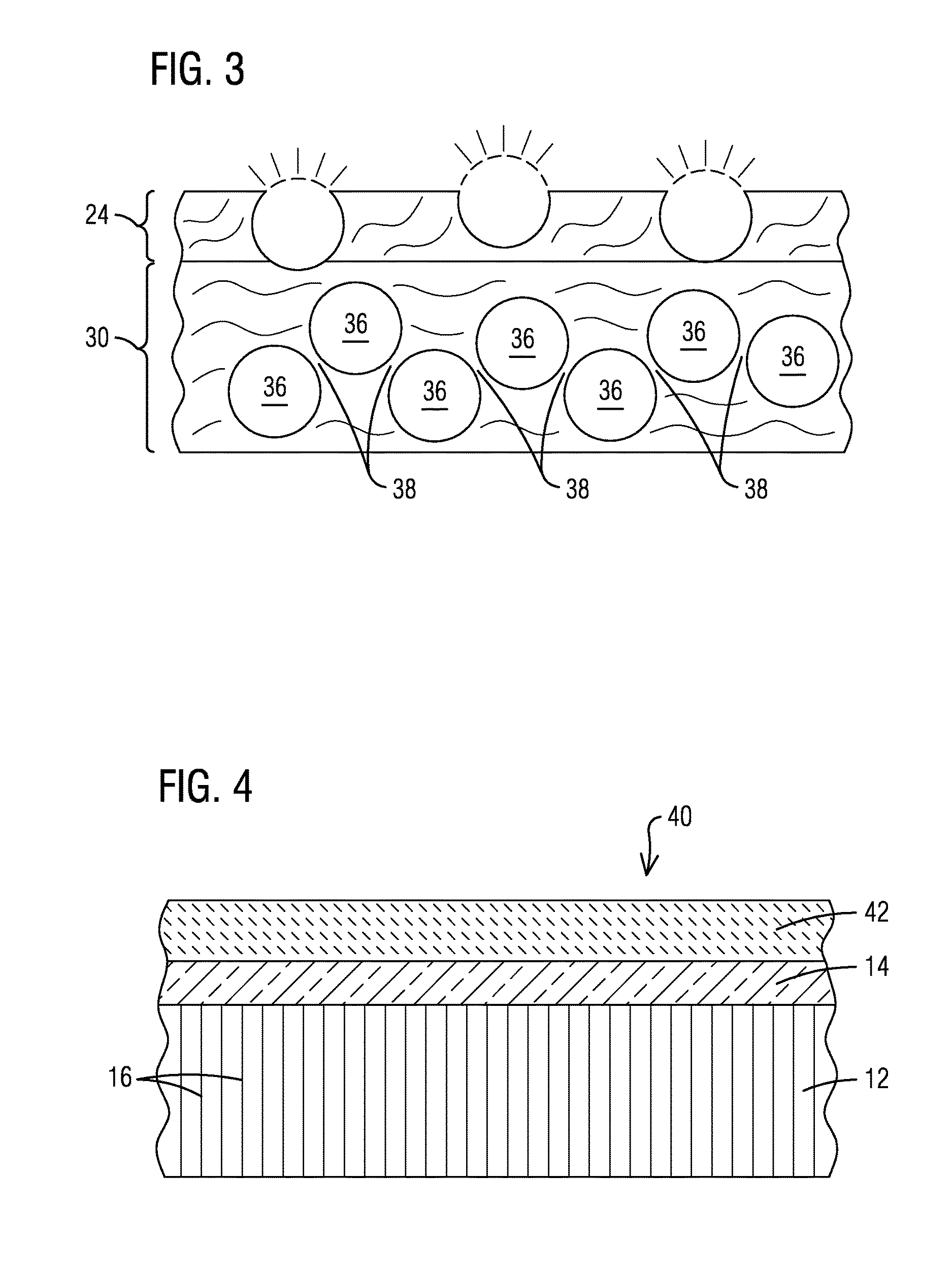Flux mediated deposition of metallic glass
a technology of flux and glass, applied in the field of material technology, can solve the problems of thermal conductivity, ceramics are not as durable as their alloy substrates, and the components of gas turbine engines can only tolerate so much hea
- Summary
- Abstract
- Description
- Claims
- Application Information
AI Technical Summary
Problems solved by technology
Method used
Image
Examples
Embodiment Construction
[0012]The present inventors have developed methods for depositing a layer of metallic glass on a crystalline alloy substrate, thereby for the first time allowing the properties of bulk metallic glass to be exploited for use in high temperature combustion environments. Metallic glass must be cooled rapidly and shielded from impurities to achieve its amorphous structure, issues which the art has not addressed for gas turbine engine component manufacturing applications. As explained in more detail below, the present inventors have solved these issues with novel flux-mediated processes designed to protect the metallic glass from the atmosphere during cooling, to facilitate the formation of an amorphous structure during cooling, and / or to assist in heat removal during cooling. The resulting layer of metallic glass can be deposited in commercially meaningful thicknesses, and it can function to protect the underlying substrate in much the same way as a traditional thermal barrier and bond ...
PUM
| Property | Measurement | Unit |
|---|---|---|
| glass transition temperature | aaaaa | aaaaa |
| temperature | aaaaa | aaaaa |
| glass transition temperatures | aaaaa | aaaaa |
Abstract
Description
Claims
Application Information
 Login to view more
Login to view more - R&D Engineer
- R&D Manager
- IP Professional
- Industry Leading Data Capabilities
- Powerful AI technology
- Patent DNA Extraction
Browse by: Latest US Patents, China's latest patents, Technical Efficacy Thesaurus, Application Domain, Technology Topic.
© 2024 PatSnap. All rights reserved.Legal|Privacy policy|Modern Slavery Act Transparency Statement|Sitemap



